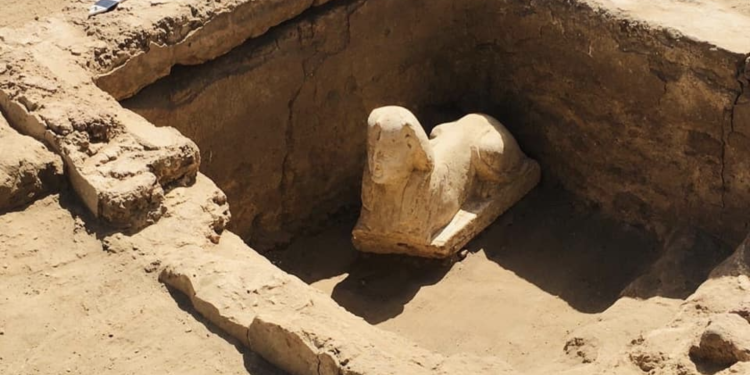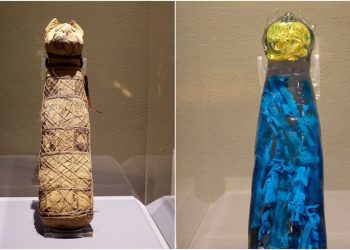Egyptian archaeologists have excavated a limestone sphinx with a dimpled, smiling face representing the Roman Emperor Claudius.
A remarkable discovery has been made beneath the ground of Egypt’s Hathor Temple, one of the country’s best-preserved ancient sites. As archaeologists brushed away layers of dust, they unearthed a beautifully carved sphinx statue made of limestone, featuring facial features reminiscent of Roman Emperor Claudius. Its “smiley face and two dimples” helped identify the subject, according to Egypt’s Antiquities Ministry.
In addition to the modestly sized sphinx, researchers found a stone slab inscribed with demotic and hieroglyphic writing dating back to the Roman era. This exciting find sheds new light on the region’s fascinating history and provides valuable insights into ancient Egyptian culture.
Dr. Mamdouh Damati, former minister of archeology and professor of archeology at Ain Shams University, called the statue “magnificent” as its face features meticulously carved real features and a slight smile. In addition, the Egyptian Ministry of Tourism and Antiquities said there are traces of yellow and red colors on the face, and a Roman-era painting in hieroglyphics and demotic was found beneath the statue.
Claudius as Pharaoh?
Claudius was the fourth Roman Emperor and ruled from 41 to 54 AD. He was not initially favored to become emperor due to his physical disabilities and speech impediment, but after the assassination of his nephew Caligula, he became emperor. While being the ruler of the Roman Empire, Claudius was also a Pharaoh of Egypt, of course not in the traditional way. Although this may sound confusing to some, Egypt had been a part of the Roman Empire since Octavian, later called Augustus, landed on Egyptian shores in 30 B.C., defeating Marc Antony and the last Queen of Egypt, Cleopatra, in the so-called battle at Actium.
Overseer rather than a ruler?
As a Roman Emperor, Claudius was responsible for overseeing the administration of Egypt through his appointed officials. His rule over Egypt was marked by efforts to maintain the province’s grain supply, which was crucial to the survival of the empire. However, there is no significant record of Claudius undertaking any specific projects or initiatives in Egypt during his reign.
It is worth noting that after the Roman conquest of Egypt in 30 BC, the Roman rulers of Egypt adopted many Egyptian customs and practices, such as wearing traditional Pharaonic headdresses and participating in traditional religious ceremonies.











